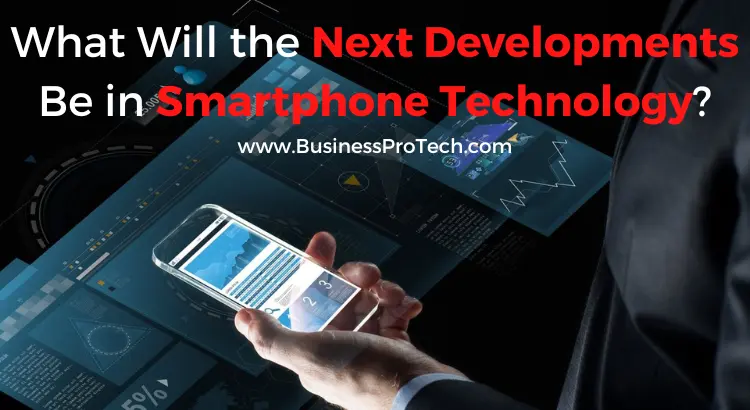Smartphones are one of the fastest-developing consumer technologies.
From essential devices with miniature keyboards to impressive, touch-screen devices with ultra-high-resolution displays, it can be difficult to keep up with the latest features.
Keep reading to find out how smartphone technology might change and adapt in the immediate future.

How Have Smartphones Developed?
Even though smartphones have only existed for a few decades, the technological development witnessed during such a small timeframe has been exponential.
As a brief overview, the following timeline reflects the evolving history of smartphones:
- In January 2007, Apple CEO Steve Jobs unveiled the very first iPhone
- By November 2007, Google offered its Android operating system for free
- Android released its first phone in November 2008
- By October 2011, Samsung was the largest smartphone vendor
In just 15 years, the iPhone has evolved drastically: from the original iPhone 2G with a single 2-megapixel camera and 4GB of internal memory to the remarkable iPhone 14 complete with an A15 Bionic chip and 5-core GPU, the changes are almost immeasurable.
We’ve Outlined Some of the Predicted Developments in Smartphone Technology
Wireless Charging
The battery life has been a key selling point of new model smartphones, but how will this improve in the future? As batteries continually get simultaneously more portable and more powerful, the way we charge our mobile phones will also change.
With some of the best wireless chargers readily available, this technology should soon be widespread. We might expect to see wireless charging plates in cars, in cafés and bars, and replacing the conventional power sockets we use at home.
Cables and Connectors
Similarly, charging capability is a developing feature, with the USB-C being the latest frontrunner in USB varieties. The specifications for USB-C were first published in 2014, with the connector becoming intensely popular since then.
The main difference between older generations of USB and the USB-C is Power Delivery. Unique to USB-C, this supporting feature increases charging rates and allows the connectors to support up to 100 watts of power.
Download Speeds
The upload and download speeds of phones are always increasing, especially with the implementation of 5G, the fifth-generation mobile network. 5G is being rolled out across the UK, with plans submitted for major towns and cities.
This new global wireless standard enables a cellular network that’s up to 100 times faster than 4G. These unprecedented data speeds open brand new opportunities for multinational enterprises and successful individuals, too.
By 2030, we should expect 6G internet to launch commercially.
Refined Artificial Intelligence (AI)
Smartphones already use AI in multiple applications, including the iOS voice assistant, Siri. However, experts predict that over the next ten years, artificial intelligence could play a vital role in our daily lives.
In the future, we should expect AI to be capable of making much more complex, human-like decisions.
It might become the center of connected devices for entertainment, cars, and even home automation. AI has the potential to manage our tasks, routines, and lifestyles.